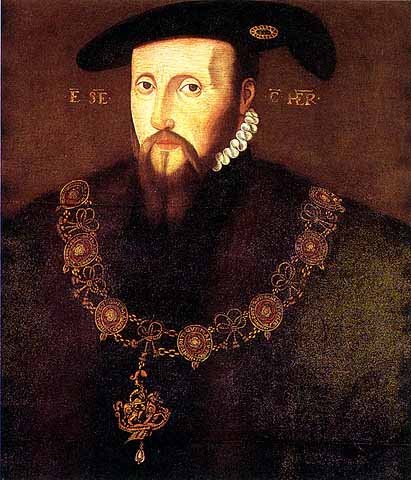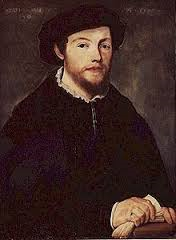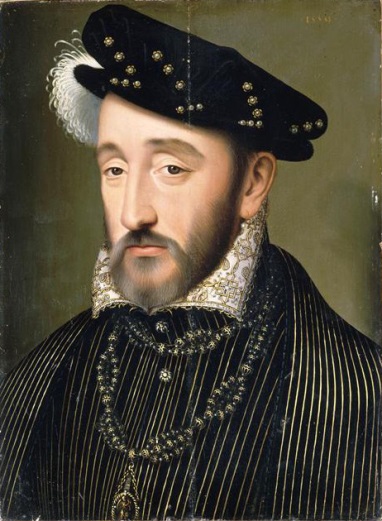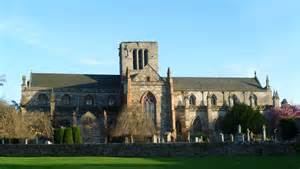Marie of Guise: Life Story
Chapter 7 : War of the Rough Wooing (1543 - 1550)
Henry VIII was beside himself at the rejection of the Treaty of Greenwich and thus began the ‘War of the Rough Wooing’. He would spare neither money nor men to bring Scotland to heel, and sent his brother-in-law, Edward Seymour, Earl of Hertford, to
‘Put all to fire and sword, burn Edinburgh town…putting man, woman and child to fire and sword, without exception where any resistance shall be made.’

Hertford did his best to follow orders and wreaked destruction in the lands around Edinburgh, although he could not capture the Castle. Despite this, the Queen of Scots remained safe from her great-uncle, with Marie at Stirling.
By June of 1544, the Scots nobles were sufficiently unimpressed by the performance of Arran for them to consider giving Marie a place in Government – presumably counting on her relationship with France as a factor in her suitability. A Convention held at Stirling agreed that she would head a sixteen-man advisory council for Arran. Beaton, however, remained as the strongest adversary to Arran, although both were now, in theory, committed to resisting England.
Beaton, although not by any means a fanatical man of religion, despite his Cardinalate, had the radical, but popular, Protestant preacher, George Wishart, burnt for heresy. This was probably the single act that would bear most fruit for the Protestant Reformers in Scotland. Wishart’s supporters, together with Beaton’s political enemies, assassinated Beaton on 28th May 1546 and barricaded themselves in to his castle at St Andrew’s, holding Arran’s son hostage to prevent reprisals.

In 1547 both Henry VIII of England and Francois I of France died. This did not, as might have been expected, reduce tensions, rather it increased problems for Scotland as Lord Protector Somerset (Hertford’s new title) upped the pressure, and Francois’ heir, Henri II, began to take a serious interest in Scotland.
Before Marie married James V, there had been a rumour that Henri would divorce his wife, Catherine de Medici, to marry Marie – perhaps a warm personal relationship between Henri and Marie is one of the factors in his support of her. One of Henri’s first moves was to send a force to relieve Beaton’s castle of St Andrew’s, which was achieved in six hours by bombardment from French shipping. One of the men captured and sent to the French galleys was John Knox, who was to prove a thorn in Marie’s side.
In September 1547, Somerset led a huge force into Scotland. He had received assurances from the pro-English faction, including Lennox, that there would be local support for him, but it did not materialise. Even without this, despite some initial early Scottish success, the Scots were massacred on Saturday, 10th September; thousands cut down as they fled the carnage. The Battle of Pinkie Cleugh was the last, terrible conflict between England and Scotland as independent nations.

Somerset burnt Leith, but did not follow up his victory in any meaningful military way although he occupied land and fortified castles at Roxburghe, Home, Inchcolm, Broughty, Lauder, Haddington, Inchkeith and Dunglass with a view to having a base for further incursion. Simultaneously, he continued to promote the idea of a union between the two countries, designed to appeal to the growing Protestant faction.
Nevertheless, the vast majority of Scots, perhaps encouraged by French pensions, remained resolutely opposed to union, (or as they saw it, subjection), with England. On 16th October a Convention at Edinburgh agreed to ask for French help. In January 1548, Arran and Henri II agreed a new arrangement. Queen Mary would be sent to France to marry the Dauphin, and, in the long term, Mary’s children would be kings of both France and Scotland. In the meanwhile, Henri would extend French protection, in the shape of money and men, to Scotland. For this he would also receive the two castles of Dunbar and Blackness.
Arran (who had hoped to marry his own son to the Queen) was mollified by 12,000 livres, a French Duchy (Chatelherault) and promises of the daughter of the Duke of Montpensier for his son. He was to remain regent until Mary was of age. In addition, the French were to agree that
‘the realm, laws and liberties thereof (were to be kept) as has been in all kings’ times of Scotland bypast and to marry her (Mary) upon no other person but upon the said Dauphin.’
On 16th June 1548, 6000 French troops arrived to reinforce Scottish strength and try to wrest the fortresses Somerset had grabbed from English control. Marie, together with the Court, travelled to Haddington, where the castle, held by the English, was under siege. The Estates were called to meet in the Abbey. The Earl of Angus carried the crown, the Earl of Argyll, the sceptre and Lord Rothes the sword of Honour. On 7th July 1548, Arran and the Estates consented to the marriage of Mary to the Dauphin, with the details enshrined in the Treaty of Haddington.

Politically, Marie was delighted with the outcome. Her daughter would be Queen of France as well as of Scots, and the Guise family would be able to increase its influential position in both countries. Personally, it must have been a terrible blow to send her little girl, only five years old, to France without her.




